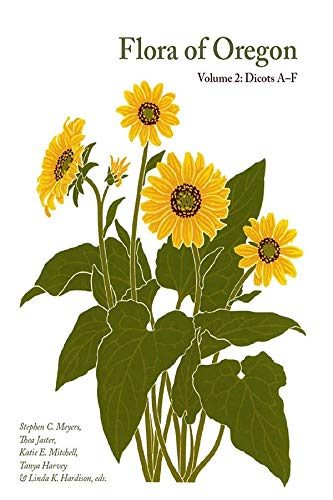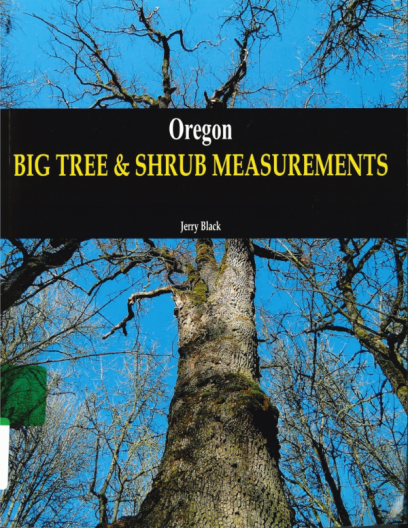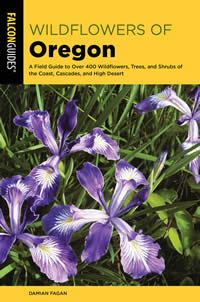Resource for the vascular plants of Oregon that grow without cultivation, includes a plant distribution mapping program and a tool for plant identification.
Keyword: Native plants--Oregon
Flora of Oregon, Volume 2: Dicots A-F
 The second volume of “Flora of Oregon” continues the excellent work of volume 1, released in 2015, by focusing on the families of dicots from A to F. The third and final volume, in preparation, will be about the remaining dicot families.
The second volume of “Flora of Oregon” continues the excellent work of volume 1, released in 2015, by focusing on the families of dicots from A to F. The third and final volume, in preparation, will be about the remaining dicot families.
While the keys and botanical descriptions are the core of this work, like the previous volume there are some excellent additions. An introductory essay discusses the many considerations and importance of native plant gardens. An appendix provides a long list of native plants adaptable to gardens and their cultural needs. Maps show the most suitable regions within Oregon for each species, and these recommendations could easily be extrapolated to Washington.
Another essay – “Insects as Plant Taxonomists” – deeply dives into the interrelations between plant families and insect families, and how they have evolved together. The authors hope “to inspire curiosity and enlightenment about the many different insect activities that can be observed while outdoors.” A final essay introduces the process for creating herbarium specimens and their importance to taxonomists.
Excerpted from the Spring 2021 issue of the Arboretum Bulletin
Oregon Big Tree & Shrub Measurements
 The world champion Douglas-fir in height is found in Coos County, Oregon. But what if your interest lies in smaller trees? For example, the tallest vine maple (Acer circinatum) in the country is 46’ high and found in Clatsop County, Oregon. This detail, along with many, many others can be found in “Oregon: Big Tree & Shrub Measurements” by Jack Black.
The world champion Douglas-fir in height is found in Coos County, Oregon. But what if your interest lies in smaller trees? For example, the tallest vine maple (Acer circinatum) in the country is 46’ high and found in Clatsop County, Oregon. This detail, along with many, many others can be found in “Oregon: Big Tree & Shrub Measurements” by Jack Black.
At first glance, this book may seem like a curiosity, one person’s obsession with finding, measuring, and photographing (typically with a convenient human standing nearby for scale) the largest and tallest of the Oregon flora. However, the charts and especially the photographs gave me strong admiration of the diversity of woody plants in both wild and managed settings.
The roughly 200 species considered are almost evenly divided between natives and introduced species. Short vignettes give the back story for some of the more remarkable examples. Although Black compiled and published this book, his endnotes document the work of many individuals and organizations in finding, measuring, and recording these special trees. It represents a real labor of love by all involved. A new, larger edition was published in 2021.
Excerpted from the Spring 2021 issue of the Arboretum Bulletin
Wildflowers of Oregon
 Damian Fagan is a University of Washington graduate in botany who now lives in Oregon. His “Wildflowers of Oregon” introduces 400 of the most common wildflowers from across that state, arranged by colors. The majority of these are herbaceous plants, but trees and shrubs with prominent flowers are included. Most of these range northward into Washington and even British Columbia, making this a useful reference throughout the Pacific Northwest.
Damian Fagan is a University of Washington graduate in botany who now lives in Oregon. His “Wildflowers of Oregon” introduces 400 of the most common wildflowers from across that state, arranged by colors. The majority of these are herbaceous plants, but trees and shrubs with prominent flowers are included. Most of these range northward into Washington and even British Columbia, making this a useful reference throughout the Pacific Northwest.
Comments with each flower typically include the source of the botanical name. For example, I learned that Tellima (as in Tellima grandiflora, or Fringecups) “is an anagram of Mitella, another genus in the Saxifrage Family.” Other notes discuss ethnobotanical uses, or hints on distinguishing between similar species.
I would recommend this book for the more casual observer. A glossary is provided, but the descriptions mostly use non-technical terms. The selected species are the most commonly seen and the single photograph along with the descriptive text will suffice in most cases for identification – there are no keys. The author co-dedicates the book to the memory of Art Kruckeberg.
Excerpted from the Summer 2019 Arboretum Bulletin.
Native Plant Society of Oregon
PlantNative.com
“Dedicated to moving native plants and naturescaping into mainstream landscaping practices.” Includes a how-to for creating a native plant landscape and directories by state for native plant nurseries, regional plants and community service organizations.